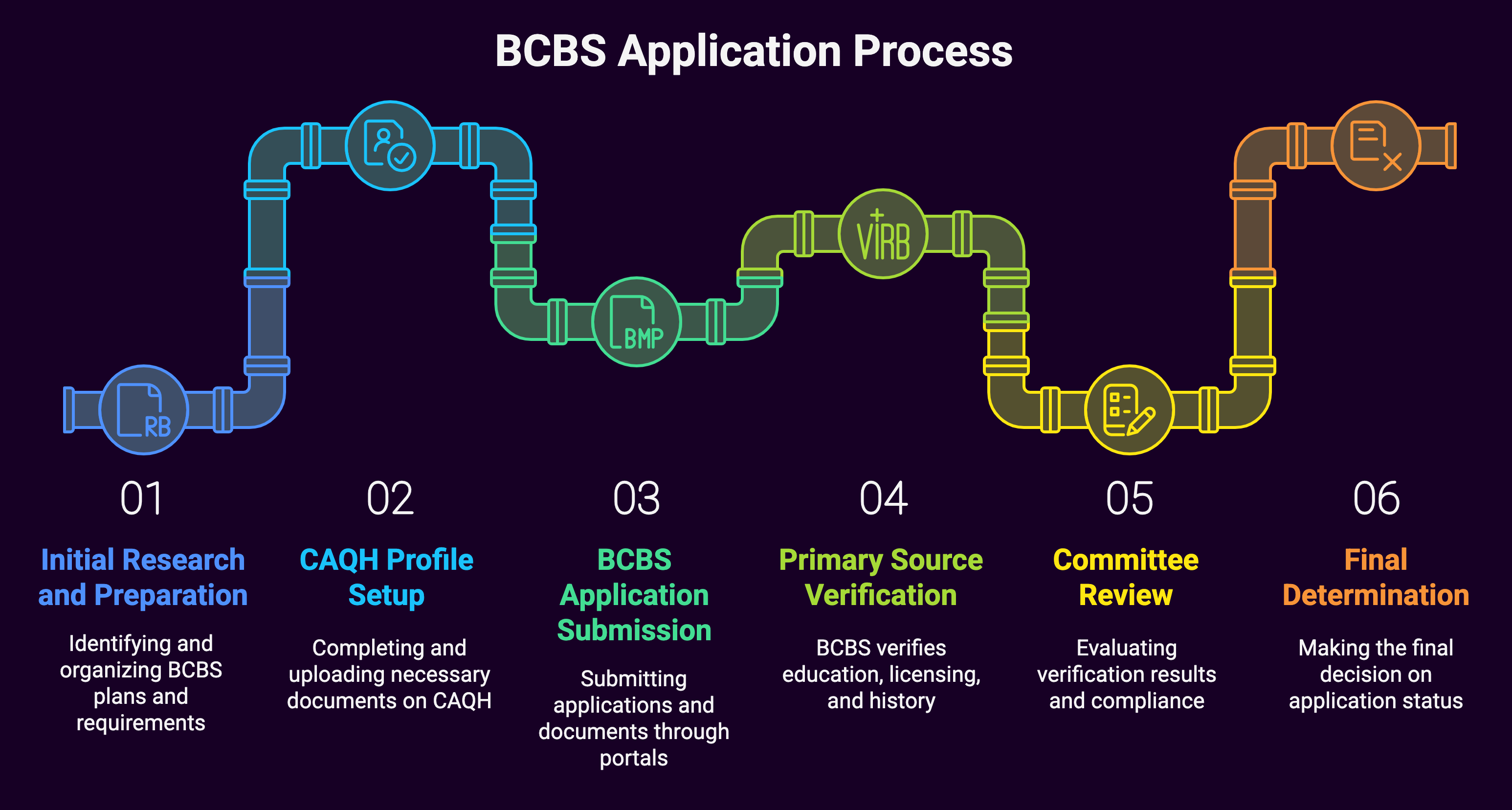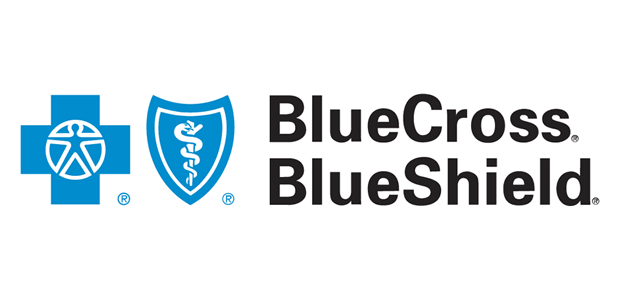Navigating the credentialing process with Blue Cross Blue Shield (BCBS) might seem like charting a course through unfamiliar waters. But don’t worry – we’ve got your compass right here. Whether you’re a solo practitioner, part of a group practice, or a credentialing specialist handling multiple providers, this comprehensive guide will help you navigate BCBS’s unique credentialing landscape.
We’ll break down the process into manageable steps, share insider tips, and help you avoid common pitfalls that could delay your application. Ready to begin your journey to becoming a BCBS network provider? Let’s dive in.
Understanding BCBS Credentialing Basics
First, let’s understand what makes BCBS different. Unlike some other payers, BCBS operates through independent companies across different states.
This means:
- Each BCBS plan may have slightly different requirements
- You might need to credential with multiple BCBS entities
- Documentation requirements can vary by state
- Processing times differ between BCBS plans
The Foundation: What You’ll Need
Before starting your application, gather these essential documents:
Basic Documentation:
- Current state medical license(s)
- DEA registration and state DPS/CDS (if applicable)
- Board certification(s)
- Professional liability insurance declaration page
- CV showing 5 years of work history (no gaps)
- Medical school diploma
- Residency/fellowship certificates
- ECFMG certificate (if applicable)
- Government-issued photo ID
- Social Security card
- National Provider Identifier (NPI)
- CAQH ProView profile
- Medicare/Medicaid numbers (if applicable)
BCBS-Specific Requirements
State-by-State Variations
Each BCBS plan has unique requirements.
Common variations include:
- Different liability insurance minimums
- State-specific background check requirements
- Varying site visit requirements
- Plan-specific application forms
The CAQH Foundation
Like most major insurers, BCBS uses CAQH ProView.
However, they have specific requirements:
- Complete attestation every 120 days
- Authorize all relevant BCBS plans
- Ensure consistency with state applications
- Maintain current certificates and licenses
The Application Process: Step by Step

Step 1: Initial Research and Preparation
- Identify relevant BCBS plans for your practice
- Review each plan’s specific requirements
- Create a checklist for each BCBS entity
- Organize documentation by plan
Step 2: CAQH Profile Setup
- Complete all sections of CAQH ProView
- Upload required documents
- Authorize relevant BCBS plans
- Set attestation reminders
Step 3: BCBS Application Submission
- Access the provider portal for each BCBS plan
- Complete plan-specific applications
- Submit supporting documentation
- Pay any applicable fees
- Track submission dates and confirmation numbers
Step 4: Primary Source Verification
During this phase, BCBS will verify:
- Education and training
- Licensing
- Board certifications
- Work history
- Malpractice history
- Hospital privileges
- References
Timeline: Usually 45-90 days, varying by plan
Step 5: Committee Review
The credentialing committee evaluates:
- Verification results
- Practice patterns
- Quality indicators
- Compliance history
Step 6: Final Determination
Possible outcomes include:
- Approval
- Denial
- Request for additional information
Navigating Multiple BCBS Plans
Managing Multiple Applications
- Create a master tracking spreadsheet
- Use consistent information across applications
- Maintain separate files for each plan
- Track deadlines and follow-up dates
Tips for Multi-State Providers
- Prioritize by patient volume
- Consider delegated credentialing
- Use centralized document management
- Set up a calendar for renewal dates
Best Practices for Success

Documentation Management
- Create digital copies of everything
- Use consistent naming conventions
- Maintain a credentialing calendar
- Keep separate folders by BCBS plan
- Store confirmation numbers and reference IDs
Communication Strategies
- Designate a primary contact person
- Document all communications
- Follow up every 2-3 weeks
- Keep written records of conversations
- Use official channels for submissions
Common Challenges and Solutions
Delayed Processing
If facing delays:
- Check application status online
- Contact provider relations
- Verify CAQH attestation
- Submit missing information promptly
Information Discrepancies
To resolve discrepancies:
- Review all submissions for consistency
- Update CAQH immediately
- Send corrections through proper channels
- Follow up to confirm receipt
Special Situations
Group Practice Considerations
For group practices:
- Coordinate individual provider applications
- Manage group agreement separately
- Consider delegated credentialing options
- Maintain group demographic information
Adding Practice Locations
When adding locations:
- Notify each relevant BCBS plan
- Update CAQH profile
- Complete location add forms
- Verify tax ID requirements
Recredentialing Process
Prepare for recredentialing:
- Start 6 months before due date
- Update all documentation
- Review any new requirements
- Complete CAQH re-attestation
Maintaining Your BCBS Credentials
Ongoing Compliance
- Track expiration dates
- Monitor requirement changes
- Update information promptly
- Maintain accurate CAQH profile
- Document continuing education
Regular Updates
Keep BCBS informed of:
- Practice changes
- Provider status updates
- Location changes
- Tax ID modifications
- Coverage arrangements
Expert Tips for Long-term Success
Building Strong Relationships
- Establish contact with provider representatives
- Attend BCBS provider workshops
- Join provider advisory groups
- Stay informed about policy changes
Quality Reporting
- Understand quality metrics
- Participate in quality programs
- Document outcomes
- Meet reporting deadlines
Resources and Support
Key Contacts
- Provider Services (plan-specific)
- Credentialing Department
- Network Management
- Technical Support
Online Resources
- BCBS plan websites
- Provider portals
- CAQH ProView
- State medical board websites
Final Thoughts
Remember that credentialing with BCBS is an ongoing relationship, not just a one-time process. Stay organized, maintain open communication, and keep detailed records. While the process may seem complex, following this guide’s structured approach will help ensure a smooth credentialing journey.
Quick Reference Troubleshooting Guide
Common Issues and Solutions
Application Status Issues
- Check online portal
- Contact provider services
- Verify submission receipt
- Follow up systematically
Document Problems
- Review requirements carefully
- Submit current versions
- Follow format specifications
- Keep submission records
Timeline Concerns
- Start early
- Follow up regularly
- Document delays
- Escalate when necessary
Success with BCBS credentialing comes down to attention to detail, proactive management, and consistent follow-through. Keep this guide handy as your reference throughout the process, and don’t hesitate to reach out to your local BCBS provider representative for specific guidance.

